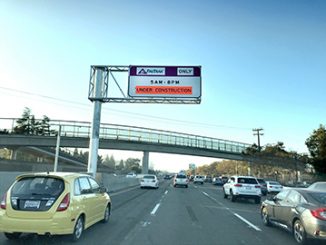
BY ELAINE GOODMAN
Daily Post Correspondent
The city of Palo Alto would be expected to accommodate an estimated 10,058 new homes between 2023 and 2031, under a housing quota formula approved by a regional planning agency.
The estimated housing quota for Mountain View for that period is 11,381. Menlo Park’s estimated quota is 3,075 new homes. Quotas for Los Altos and Redwood City are 2,267 and 5,199, respectively.
The Association of Bay Area Governments’ executive board this month approved a method for calculating housing quotas for cities in the nine-county Bay Area. The quotas are also known as the Regional Housing Needs Allocation, or RHNA.
But the executive board’s approval is not the final word. ABAG is opening a public comment period on the quota methodology that started Monday (Oct. 26) and runs until noon on Nov. 24.
After that, several additional steps would follow before the RHNA methodology — and individual cities’ housing quotas — are finalized. That’s expected to happen next year. The state’s Department of Housing and Community Development is requiring the Bay Area to plan for 441,176 new housing units from 2023 to 2031. The Bay Area’s quota has increased sharply from the 187,000 new housing units that HCD required from 2015 to 2023.
“New state laws — as well as the region’s strong economy and related job and household growth over the past decade” are major reasons why HCD increased the Bay Area’s quota, ABAG said in a news release.
It is ABAG’s job to divide the Bay Area housing quota among cities in the region. RHNA is also broken down by affordability to different income levels: very low, low, moderate, and above moderate.
A 37-member Housing Methodology Committee spent a year deciding on formula for cities’ RHNA allocation. The proposed formula starts with the percentage of Bay Area households each city is expected to have in 2050. Those figures will come from Plan Bay Area 2050, a long-range plan being developed by ABAG and the Metropolitan Transportation Commission.
Because Plan Bay Area 2050 isn’t yet final, the baseline for the housing quotas could change, an ABAG planner noted during the executive board’s meeting on Oct. 15. That’s one reason why the housing quotas ABAG has listed for individual cities are considered preliminary. ABAG also might choose to adjust its formula for the quotas before it’s finalized.
‘High opportunity areas’
Under the proposed RHNA methodology, up to three factors are applied to a city’s baseline figure. One of those shifts new homes to “high opportunity areas.” The state determines what areas are high opportunity based on factors such as employment rates, home values, percentage of adults with bachelor degrees, and air and water quality.
The other two factors in the RHNA formula are how many jobs can be reached from a city by a 30-minute car commute or a 45-minute transit trip.
Many speakers during the executive board’s Oct. 15 meeting supported the proposed RHNA formula.
But Cupertino Mayor Steven Sharf said changes prompted by the Covid-19 pandemic should be considered. For example, MTC last month proposed that certain businesses have employees work from home 60% of the time. The proposal, which would apply to businesses with 25 or more workers, would need approval from the state Legislature.
Sharf said remote working could spell “the end of the mega commutes.”
“We need a more intuitive RHNA methodology that takes into account the new realities of Covid-19 and the drastic changes in housing and transportation that are already occurring,” Sharf told the executive board during a public comment period.
ABAG executive board member Dave Hudson said the RHNA formula should allocate more homes where jobs are concentrated. He pointed to San Francisco, San Mateo and Santa Clara counties, where 67% of the Bay Area’s job growth will be from 2015 to 2050, according to ABAG projections.
“If you’re going to show that two-thirds of all the jobs are in three counties, you need to show two-thirds of all the housing going in these three counties,” said Hudson, who is a San Ramon City Council member.
The proposed RHNA formula would allocate 16% of the Bay Area housing quota to San Francisco; 11% to San Mateo County; and 33% to Santa Clara County.
10 million expected in Bay Area by 2050
Others have previously questioned the growth forecasts for Plan Bay Area 2050 in light of COVID-19. ABAG and MTC predict the Bay Area will add 1.4 million jobs from 2015 to 2050, reaching 5.41 million. Population is predicted to grow from 7.66 million in 2015 to 10.33 million in 2050, a 35% increase.
The forecasts take into account economic cycles, MTC planners have said previously. The impacts of COVID-19 and the resulting recession are expected to be most significant during the next five to 10 years, only part of the plan’s 30-year timeframe, MTC said.
Written comments on the RHNA methodology may be sent to [email protected]. The deadline for comments is noon on Nov. 24. The public may also comment during a meeting of ABAG’s Regional Planning Committee on Nov. 12, starting at 1 p.m. The meeting will be conducted remotely via Zoom.




> Is 10,000 more homes too many?
No, it’s way too few
> Now is your chance to object
Okay, I will